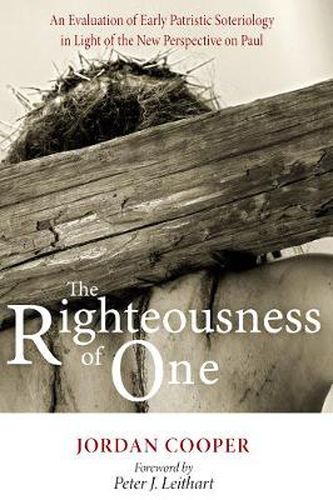Readings Newsletter
Become a Readings Member to make your shopping experience even easier.
Sign in or sign up for free!
You’re not far away from qualifying for FREE standard shipping within Australia
You’ve qualified for FREE standard shipping within Australia
The cart is loading…






This title is printed to order. This book may have been self-published. If so, we cannot guarantee the quality of the content. In the main most books will have gone through the editing process however some may not. We therefore suggest that you be aware of this before ordering this book. If in doubt check either the author or publisher’s details as we are unable to accept any returns unless they are faulty. Please contact us if you have any questions.
Since the publication of E.P. Sanders’ Paul and Palestinian Judaism in 1977, Paul’s soteriology has received extensive evaluation in light of second temple Judaism. These works have focused on exegesis of the Pauline text and evaluating Sanders’ proposal of covenantal nomism within the second temple Jewish literature. There has been an unfortunate gap in this discussion: historical theology. This work addresses the historical claims made by proponents of the New Perspective on Paul regarding Luther’s theology and the early church. In The Righteousness of One, Jordan Cooper demonstrates that the portrait of Luther given by many of the New Perspective writers is a caricature, read through the lens of both Protestant scholasticism and twentieth-century existentialist theology. Luther’s views are more nuanced and balanced than many Pauline interpreters are willing to admit. In light of this reevaluation of Luther’s own theology, early Patristic writings are evaluated in terms of similarity and disparity between Patristic Pauline interpretation and Lutheran Pauline interpretation, and thus it becomes apparent that there is continuity between the patristic tradition and Luther’s reading of the Pauline text. Rather than being driven purely by medieval debates about merit, Luther’s reading of Paul is both exegetically sensitive and consistent with the broader catholic tradition.
$9.00 standard shipping within Australia
FREE standard shipping within Australia for orders over $100.00
Express & International shipping calculated at checkout
This title is printed to order. This book may have been self-published. If so, we cannot guarantee the quality of the content. In the main most books will have gone through the editing process however some may not. We therefore suggest that you be aware of this before ordering this book. If in doubt check either the author or publisher’s details as we are unable to accept any returns unless they are faulty. Please contact us if you have any questions.
Since the publication of E.P. Sanders’ Paul and Palestinian Judaism in 1977, Paul’s soteriology has received extensive evaluation in light of second temple Judaism. These works have focused on exegesis of the Pauline text and evaluating Sanders’ proposal of covenantal nomism within the second temple Jewish literature. There has been an unfortunate gap in this discussion: historical theology. This work addresses the historical claims made by proponents of the New Perspective on Paul regarding Luther’s theology and the early church. In The Righteousness of One, Jordan Cooper demonstrates that the portrait of Luther given by many of the New Perspective writers is a caricature, read through the lens of both Protestant scholasticism and twentieth-century existentialist theology. Luther’s views are more nuanced and balanced than many Pauline interpreters are willing to admit. In light of this reevaluation of Luther’s own theology, early Patristic writings are evaluated in terms of similarity and disparity between Patristic Pauline interpretation and Lutheran Pauline interpretation, and thus it becomes apparent that there is continuity between the patristic tradition and Luther’s reading of the Pauline text. Rather than being driven purely by medieval debates about merit, Luther’s reading of Paul is both exegetically sensitive and consistent with the broader catholic tradition.